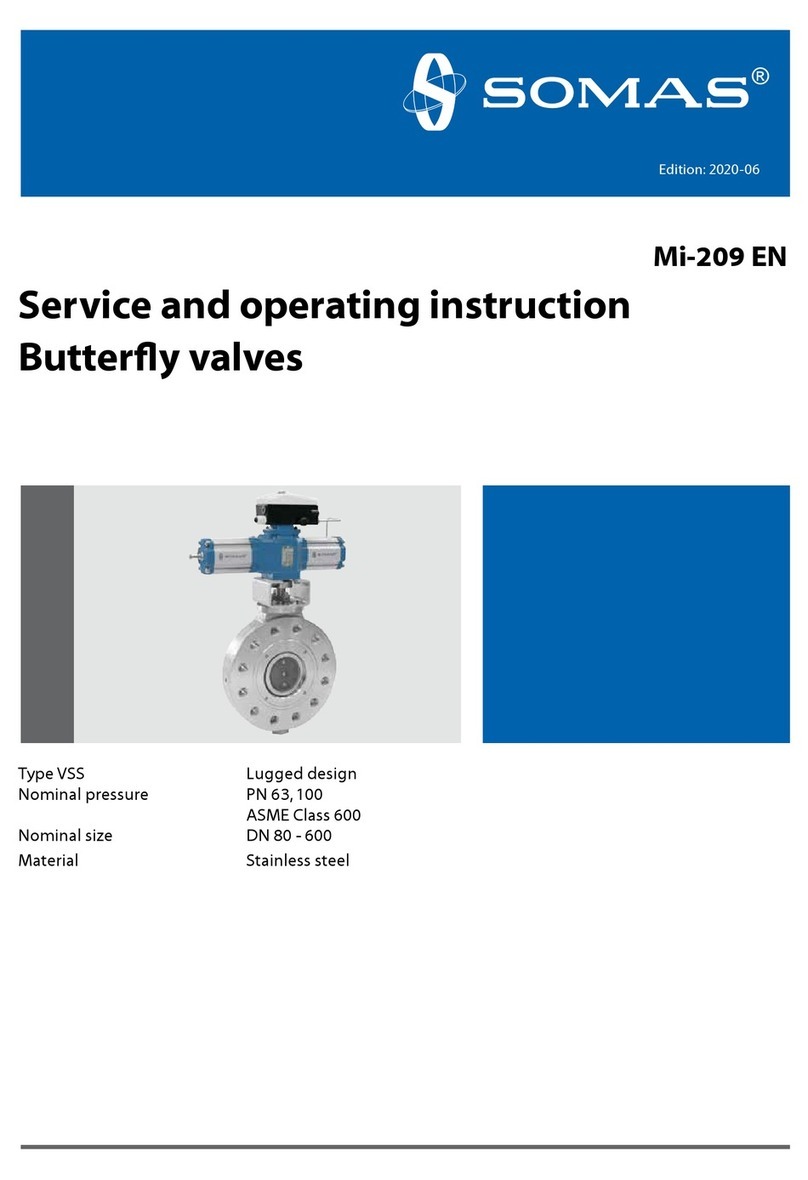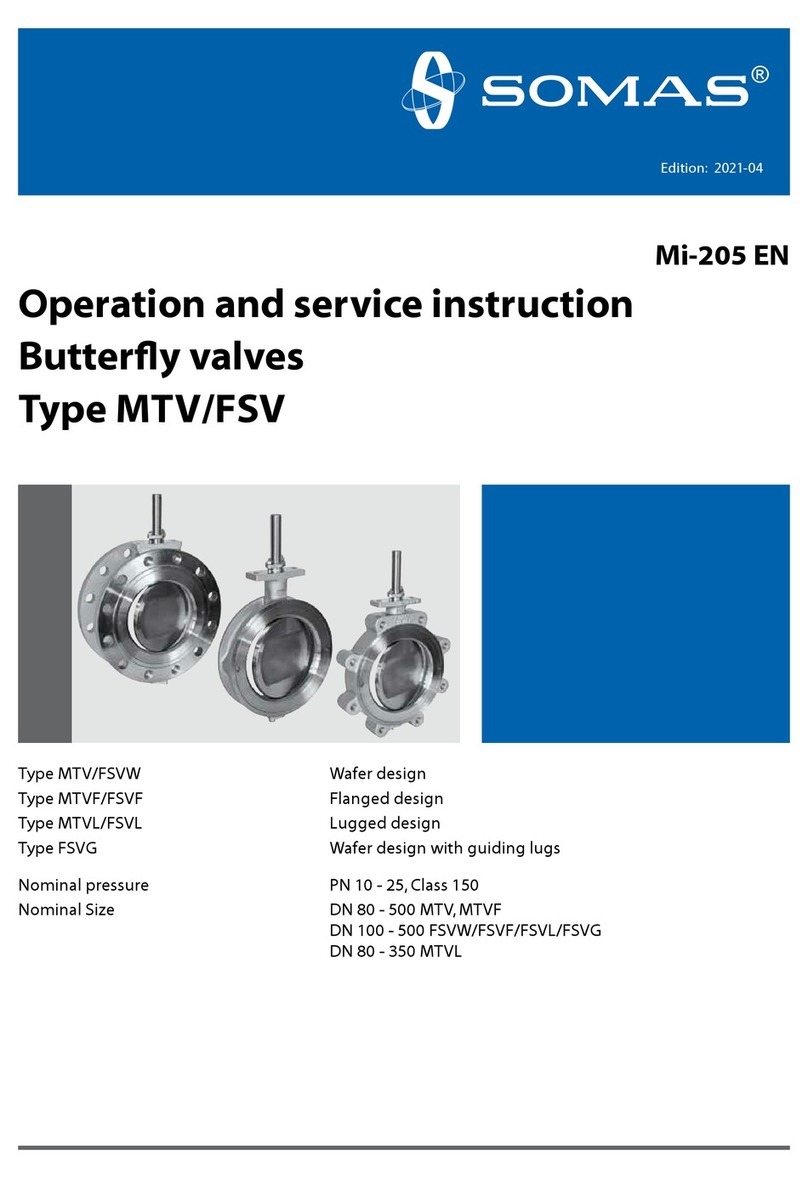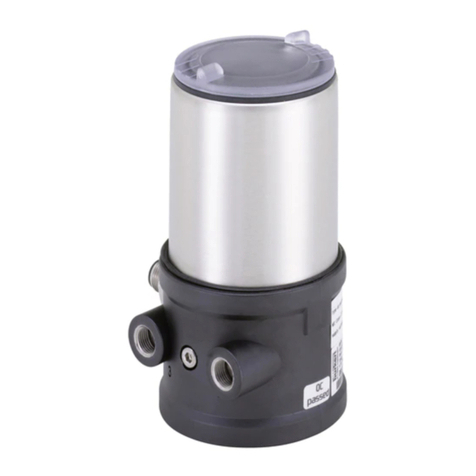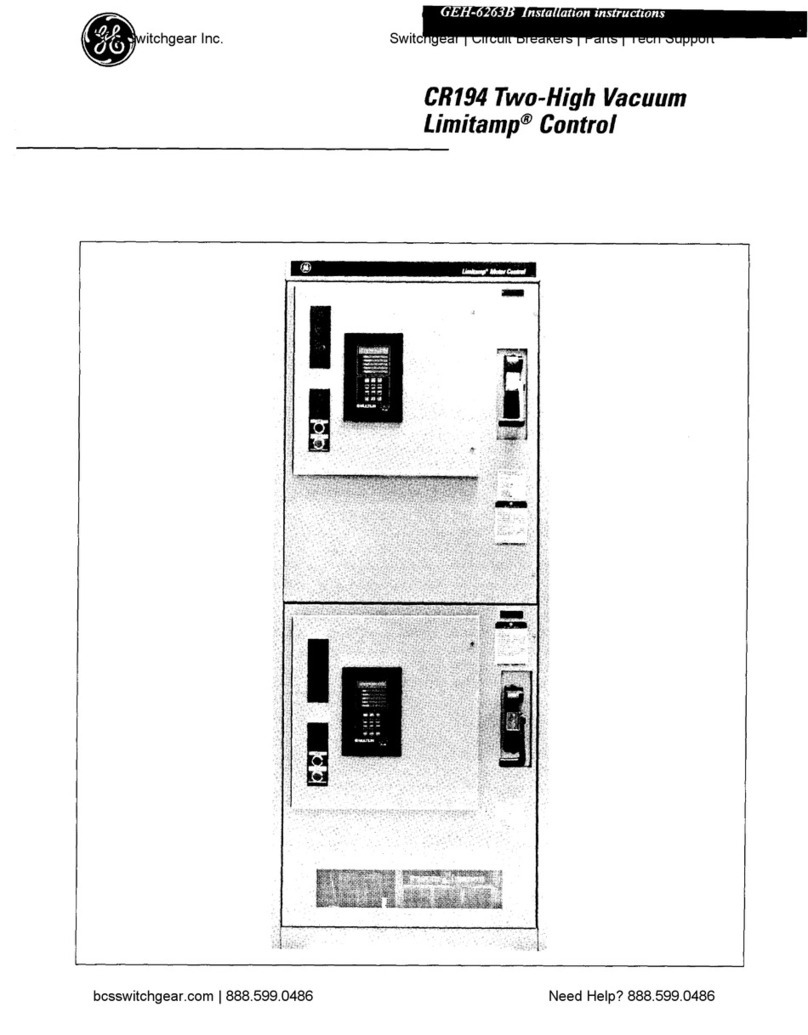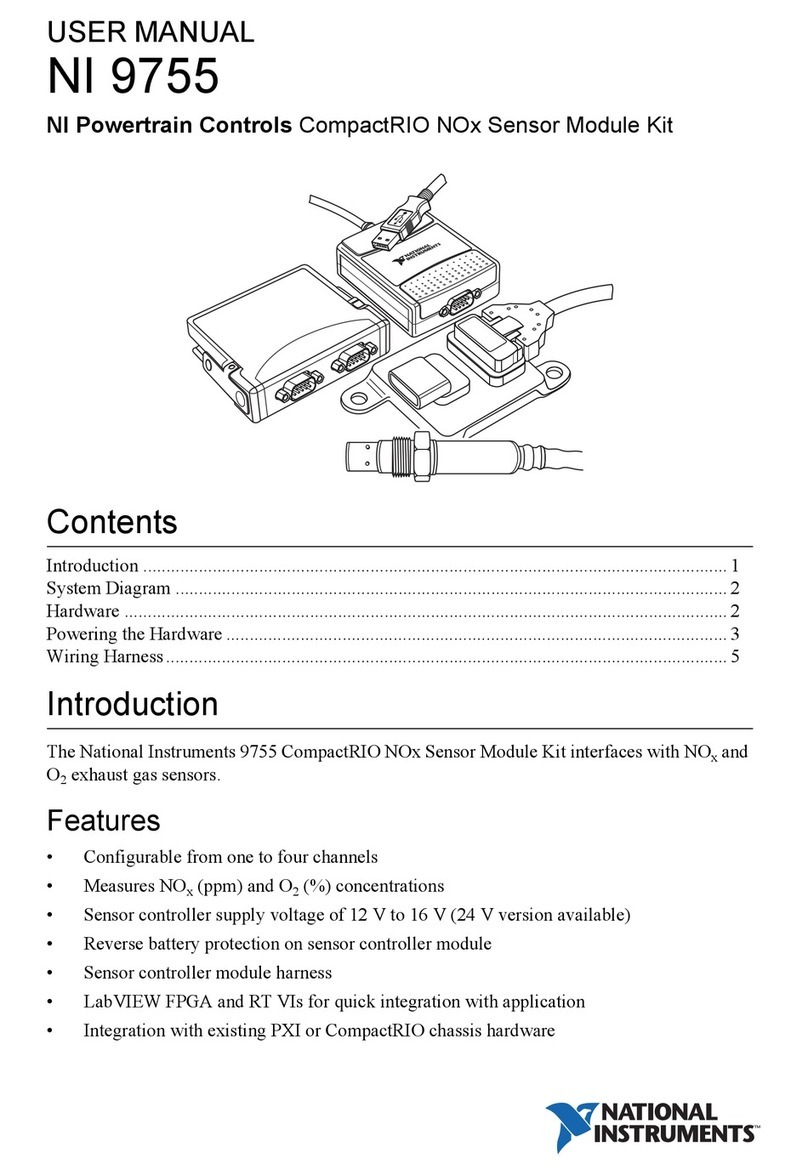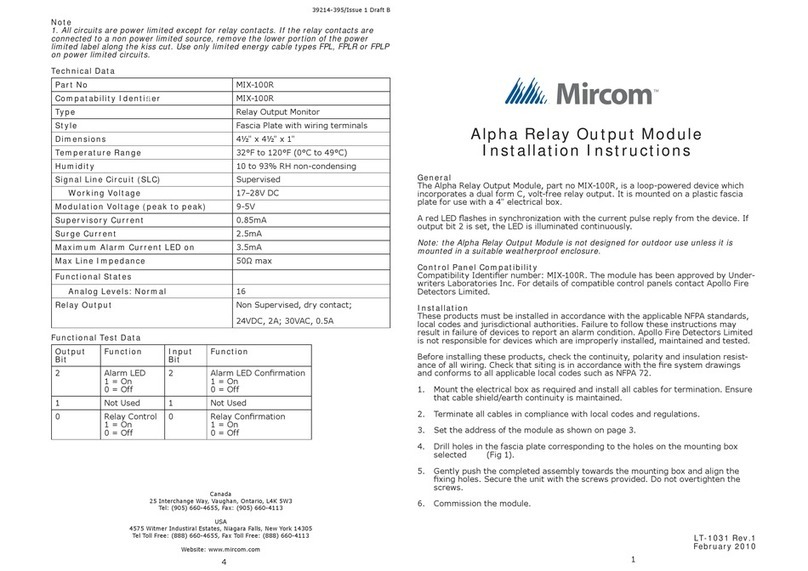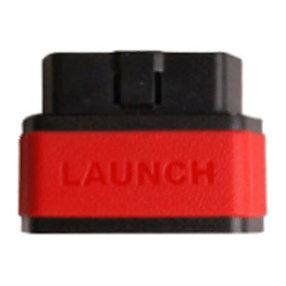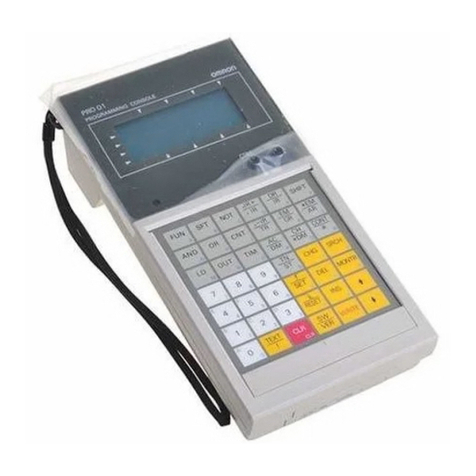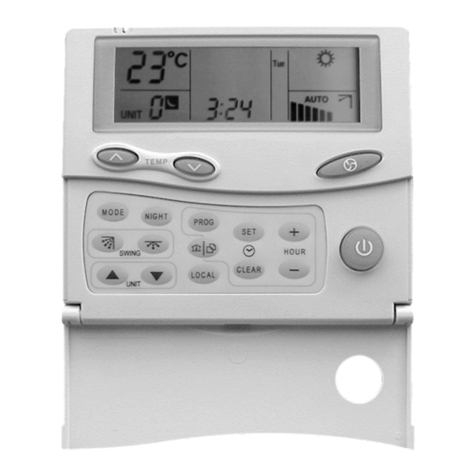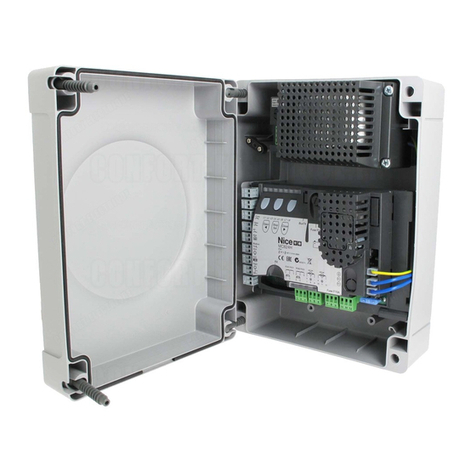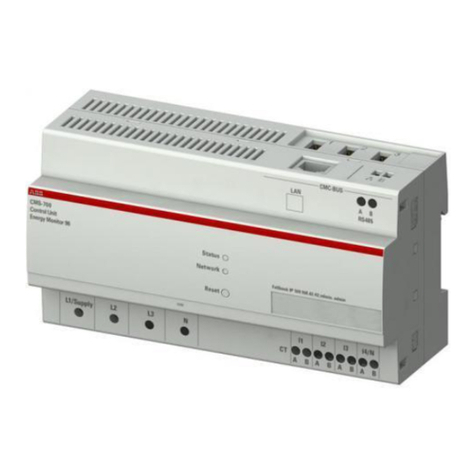SOMAS SKV Operating instructions

Mi-706 EN
Service and operating instruction
Ball valves
Type SKV/SKVT
Edition: 2020-10
Nominal pressure Nominal size NPS
Type SKV PN 40 Class 300 DN 25 - 50 1 - 2
Type SKV PN 25 Class 150 DN 80 - 400 3 - 16
Type SKVT PN 25 Class 150 DN 450 - 500 18 - 20
Material Stainless steel, Flanged design

2
Edition: 2020-10 Original document - Mi-706 EN
Introduction
This operating manual is intended for the operating, maintenance and
supervisory personnel.
This operating manual also describes components, equipment and ancillary units
which are not or only partially included in the scope of supply.
The operating personnel must have read, understood and must comply with this
operating manual.
We keep the right to do any technical changes which are necessary to improve the
product without prior notice.
Copyright
Copyright by SOMAS Instrument AB. No part of this publication may be
reproduced, stored in a retrieval system, or transmitted in any form or by any
means, graphic, electronic, mechanical, photocopying, recording, taping, or
otherwise without the prior permission of the copyright owner.
Valve supplier
SOMAS Instrument AB
Norrlandsvägen 26-28
SE-661 40 SÄFFLE
SWEDEN
Phone: +46 (0)533 167 00
E-mail: sales@somas.se
Website: www.somas.se

3
Original document - Mi-706 EN Edition: 2020-10
Table of contents
1 Preliminary remarks 6
1.1 Explanation of warnings, symbols and signs 6
1.1.1 Warnings 6
1.1.2 Symbols and signs 7
2 Safety 8
2.1 Safety instructions 8
2.1.1 General dangers 8
2.1.2 Hazards due to electrical equipment 8
2.1.3 Additional hazards 8
2.1.4 State of the art 9
2.1.5 Preconditions for using the valve 9
2.2 Designated use of the valve 9
2.2.1 Use 9
2.2.2 Liability for non-designated use 10
2.3 Organizational measures 10
2.3.1 Availability of operating manual 10
2.3.2 Additional regulations 10
2.3.3 Checks 10
2.3.4 Protective equipment 10
2.3.5 Rebuilds or modifications at the valve 10
2.3.6 Replacing damaged parts 10
2.4 Selection and qualification of personnel 10
2.5 Safety instructions for ball valves 11
3 Description 13
3.1 General information 13
3.2 Function and design 13

4
Edition: 2020-10 Original document - Mi-706 EN
4 Technical specifications 14
4.1 Tightening torque for bolts 14
4.1.1 Torques for flange boltings 14
4.1.2 Tightening torque for screws in valves 15
4.1.3 Tightening torque for stuffing box gland 15
4.1.4 Tightening torque for bearing blocks 15
5 Assembly 16
5.1 Unpacking and transportation 16
5.2 Installation of the valve in the pipeline 17
5.2.1 Important information for installation 17
5.3 Commissioning 18
5.4 Disassembly of the pneumatic actuator 18
5.5 Positioning of the shaft with disassembled actuator 20
5.6 Assembly of the pneumatic actuator 20
5.6.1 Actuator mounting alternatives 21
6 Maintenance 24
6.1 Disassembling the ball valve from pipeline 24
6.2 Maintenance 25
6.3 Installation and disassembly of the stuffing box 26
6.5 Replacing the seats and ball 28
6.5.1 Disassembly, DN 25–50 valves 28
6.5.2 Cleaning, lubricating and mounting 28
6.5.3 Disassembly, DN 80-400 valves 29
6.5.4 Cleaning, lubricating and mounting 30
6.5.5 Disassembly, DN 450-500 valves 31
6.5.6 Cleaning, lubricating and mounting 32
6.6 Replacing the shaft 33

5
Original document - Mi-706 EN Edition: 2020-10
6.6.1 Disassembly, DN 25–50 valves 34
6.6.2 Cleaning, lubricating and mounting 34
6.6.3 Disassembly, DN 80–400 valves 35
6.6.4 Cleaning, lubricating and mounting 35
6.6.5 Disassembly, DN 450–500 valves 36
6.6.6 Cleaning, lubricating and mounting 36
6.7 Adjustment of the end positions 37
6.7.1 Setting of the “closed” position with type SKV 37
6.7.2 Setting of the “open” position with type SKV 38
6.8 Leak test of the valve 39
6.9 Components 40
6.9.1 SKV, DN 25-50 40
6.9.2 SKV, DN 80-400 41
6.9.3 SKVT, DN 450-500 42
6.10 Alternative seat design 43
6.10.1 Locked seats 43
6.10.2 Scraping seats 43

6
Edition: 2020-10 Original document - Mi-706 EN
1 Preliminary remarks
To enable you to find information quickly and reliably in the operation manual,
this chapter familiarises you with the structure of the operating manual.
This manual uses symbols and special characters which make it easier for you to
find information. Please read the explanations of the symbols given in the section
below.
Ensure that you read all the safety instructions in this operating manual very
carefully.
You will find safety instructions in section 2, in the foreword to the sections and
before any working instructions.
1.1 Explanation of warnings, symbols and signs
1.1.1 Warnings
Warnings are used in this operating manual to warn against injury and material
damage. Always read and observe these warnings! Warnings are identified by the
following symbols:
In this manual are used diverse types of safety and warning notices:
Danger!
International
Safety symbol
Type of danger.
Advise for imminent danger. Not attention of the advices could be mortal or cause severe
injuries as a consequence.
Explanation of the countermeasures.
Warning!
International
Safety symbol
Type of danger.
Advise for imminent danger. Not attention of the advices could cause severe injuries or property
damage as a consequence.
Explanation of the countermeasures.
Attention!
International
Safety symbol
Type of danger.
Advise for possible danger. Not attention of the advices could cause property damage as a
consequence.
Explanation of the countermeasures.

7
Original document - Mi-706 EN Edition: 2020-10
Note
i
Advices and give tips for better understanding of the manual or a better handling of the valve.
1.1.2 Symbols and signs
Symbols and signs are used in this operating manual to provide fast access to
information.
1.1.2.1 Symbols and signs in the text
Symbol Denotation Explanation
Operating instructions This means there is an action to be carried out.
1.
2.
Operating instructions,
multi-step
Work instructions must be carried out in the
sequence shown.
Deviations from the sequence shown may result in
damages to the valves and accidents.
•
–
Lists, two-stage No activities are linked with lists.
➔Cross-reference References to images, tables, other sections or other
instructions.
Tab.1-1 Symbols in the text

8
Edition: 2020-10 Original document - Mi-706 EN
2 Safety
2.1 Safety instructions
2.1.1 General dangers
Sources of danger resulting in general hazards:
• Mechanical hazards
• Electrical hazards
2.1.2 Hazards due to electrical equipment
Due to the permanent dampness, electrically-operated machine parts represent a
potential source of danger.
Comply with all regulations on electrical equipment in damp areas!
2.1.3 Additional hazards
2.1.3.1 Entanglement, crushing and cut/sever hazards
• by moving machine parts left exposed, by removing covers for inspection,
sampling, etc.
• by automatic operated valves
2.1.3.2 Burning or scalding hazards
• by opening or leaving open function-check and/or sampling openings on
systems operating at high temperatures (above 40°C)
• by operating temperature >= 70°C. Short contacts (approx. 1s) of the skin with
the surface of the valve may cause burns (pr EN 563).
• by operating temperature = 65°C. Longer contacts (approx. 3s) of the skin with
the surface of the valve may cause burns (pr EN 563)
• by operating temperature 55°C…65°C. Longer contacts (approx. 10 ... 3s) of the
skin with the surface of the valve may cause burns (pr EN 563)
2.1.3.3 Explosion hazards
A high surface temperature on a valve and actuator, constitutes (a risk for burn
injuries, and) a risk of ignition of explosive atmospheres in ATEX applications.
The surface temperature of the equipment is not dependent on the equipment
itself, but on the ambient conditions and the process conditions. The protection
from the surface temperature is the responsibility of the end user, and must be
effectuated before the equipment is put into service.

9
Original document - Mi-706 EN Edition: 2020-10
2.1.4 State of the art
This product has been built by SOMAS Instrument AB in accordance with state-
of-the-art standards and the recognized safety rules. Nevertheless, its use may
constitute a risk to life and limb of the user or of third parties, or cause damage to
the valve and to other material property, if:
• the product is not used as designated
• the product is operated or repaired by untrained personnel
• the product is modified or converted improperly and/or
• the safety instructions are not observed.
Therefore, every person involved in erecting, operating, inspecting, maintaining,
servicing and repairing the valve must read, understand and observe the complete
operating instructions, particularly the safety instructions.
2.1.5 Preconditions for using the valve
The valve only has to be used:
• in perfect technical condition
• as designated
• according to the instructions in the operating manual, and only by safety-
conscious persons who are fully aware of the risks involved in operating the
valve
• if all protective devices are installed and operative
Rectify immediately any functional disorders, especially those affecting the safety
of the valve!
2.2 Designated use of the valve
2.2.1 Use
The valves are appropriate to be used in pulp and paper industry, chemical
industry, shipbuilding industry, energy industry and offshore industry.
Particular data to the operation and limit values are specified on the data sheet
“Si-706EN”.
The operating values, limit values and setting data must not deviate from the
values specified in the operating manual and correspondig information sheet
without consulting the manufacturer! The manufacturer cannot be held liable for
any damages resulting from non-observance of the operating manual.

10
Edition: 2020-10 Original document - Mi-706 EN
2.2.2 Liability for non-designated use
Using the valve for other purposes than those mentioned previously is considered
contrary to its designated use. For resulting damages of this, SOMAS Instrument
AB is not liable! The user take the risk.
2.3 Organizational measures
2.3.1 Availability of operating manual
The operating manual has to be stored and be readily available!
2.3.2 Additional regulations
In addition to the operating manual, it have to be observed all other generally
applicable legal and other mandatory regulations relevant to accident prevention
and environmental protection! Direct the personnel to comply with them!
2.3.3 Checks
Periodically check that the personnel carry out the work in compliance with the
operating manual and that they pay attention to risks and safety factors.
2.3.4 Protective equipment
Use when necessary protective equipment.
2.3.5 Rebuilds or modifications at the valve
Do not make any rebuilds or modifications at the valve yourself, which can affect
the security of the valve.
2.3.6 Replacing damaged parts
Valve parts that are not in perfect condition must be replaced immediately
with original spare parts! Use only original spare and wear parts from SOMAS
Instrument AB.
On unauthorized parts is not guarantee that they have been designed and
manufactured according to the application.
2.4 Selection and qualification of personnel
Operation, maintenance and repairing works require special knowledge and
may only be carried out by trained technical specialists or qualified personnel
authorized by the user.

11
Original document - Mi-706 EN Edition: 2020-10
2.5 Safety instructions for ball valves
• Operation of the ball valve is always subject to the local safety and accident
prevention regulations.
Danger!
Risk of injury!
Observe movements of the ball.
Keep hands, tools and other objects away from the area where the ball moves when the actuator
is connected to compressed air system. Single action actuators may move to “open” or “closed”
position without being connected to the air system.
Warning!
Before carrying out maintenance or repair work on the ball valve with actuator or installation
and removal of the ball valve from the pipeline, always disconnect the compressed air supply to
the actuator.
Single action actuators may move to “open” or “closed” position without being connected to the
air system.
Warning!
Ensure that personnel who work with, install or repair the ball valve are appropriately trained.
This prevents unnecessary damage and accidents or injury to personnel.
The maintenace and assembly personnel must be familiar with the process of installing and
disassembling the ball valve in a process line, the special and possible risks of the process and
the most important safety regulations.
The repair and assembly personnel must be familiar with the risks when handling pressurised
equipment, hot and cold surfaces, dangerous substances and substances which represent a
hazard to health.
Warning!
Do not exceed the design data of the ball valve!
Exceeding the design data marked on the ball valve may lead to damage and uncontrolled
escape of the pressurised medium.
Both the damage as such and the pressurised medium may lead to injuries to personnel.
Warning!
Do not remove the ball valve from the line as long as it is pressurised!
Dismantling or disassembly of a pressurised ball valve leads to an uncontrolled loss of pressure.
Always isolate the relevant ball valve in the pipe system; despressurise the ball valve and remove
the medium before working on the ball valve.

12
Edition: 2020-10 Original document - Mi-706 EN
Warning!
Before assembling or disassembling the pneumatic actuator of a ball valve installed in the
pipeline depressurise the relevant valve in the pipeline system, isolate the valve and remove the
medium before working on the valve.
The pressurised medium may lead to injuries to personnel.
Warning!
Inform yourself of the properties of the medium. Protect yourself and your environment from
hazardous or poisonous substances.
Observe the safety instructions in the safety data sheets of the manufacturers. Ensure that no
medium can enter the pipeline during maintenance work.
Warning!
Before replacing the stuffing box of a ball valve installed in the pipeline depressurise the
relevant valve in the pipeline system, isolate the valve and remove the medium before working
on the valve.
The pressurised medium may lead to injuries to personnel.
Danger!
Risk of injury!
Observe movements of the ball.
Keep hands, tools and other objects away from the area where the ball moves. The valve with
ball installed may work as a cutting tool. Do not leave any foreign objects in the valve body. The
ball of the ball valve always works as a separate device.
There is no difference whether an actuator is installed or not. The position of the ball
may change during transport or handling of the ball valve.
Warning!
Protect yourself against noise - use the relevant safety equipment.
The ball valve may cause noise in the pipeline. The noise level depends on the type of
application and can be determined with the SOMAS software SomSize.
Additional noise sources in the vicinity of the ball valve may increase the noise level.
Warning!
Beware of very cold or hot surfaces!
The body of the ball valve may become very cold or very hot during operation. Protect yourself
against frostbite and burns.
Warning!
When transporting and handling the ball valve, observe its weight.
Never lift the valve by its positioner, limit switch, solenoid valve or piping. Place the hoisting
ropes securely according to lift instruction.
The ball valve or parts thereof may injure persons if dropped.
Do not walk under suspended loads.

13
Original document - Mi-706 EN Edition: 2020-10
3 Description
3.1 General information
The SOMAS ball valves were developed to meet the requirements of industrial production for
control, on/off and hand operated valves. An unhindered flow is particularly advantageous for
substances containing dirt and the design enables a tight shut off function in closed position.
The valves of type SKV and SKVT are suitable for liquids, pulp slurry, muddy media, vapours,
gases and acids.
Two types of internal design are used: SKV and SKVT. SKV with “floating ball” design or “seat
supported ball” design, used for DN25 to DN400. SKVT with trunnion supported ball design, used
for DN450 and DN500.
Two types of seats are available PTFE 53 and HiCo (High Cobalt alloy)
3.2 Function and design
The SOMAS ball valve type SKV and SKVT is a full bore valve with a cylindrical bore for maximum
capacity. The pressure rating for DN25 - 50 is PN50 and for DN80 - 500 it is PN25. The flanges comply
with various standards and can be drilled according to the EN, ISO and ASME standards.
Spring loaded seats for excellent tightness at low differential pressures.
The valve is also available with “locked seats”. This design is used when there is a risk of media
penetrating behind the seats, a condition that forces the seats towards the ball and blocks the ball’s
rotary motion.
As standard the ball is hard chrome plated. As an option it can be coated with High Cobalt alloy
(HiCo).
The valve seats are available in two different materials:
PTFE 53 (which is PTFE reinforced with stainless steel powder) or HiCo (High Cobalt alloy).
PTFE 53 consists of 50% stainless steel powder and 50% virgin PTFE. PTFE 53 can be used up a
temperature of 200° C. To minimize deformation at high differential pressure and high temperature
the PTFE 53 material is mounted into a support ring made of stainless steel. (➔Fig.3-1).
Seat in HiCo material (➔Fig.3-2) is used for higher temperatures and for fluids containing
impurities which mechanically can destroy a PTFE 53 seat.
Fig.3-1 PTFE 53 Fig.3-2 HiCo (High Cobalt alloy)

14
Edition: 2020-10 Original document - Mi-706 EN
4 Technical specifications
4.1 Tightening torque for bolts
4.1.1 Torques for flange boltings
Use washers and greased bolts to ensure that the joints function properly. Tighten the bolts
alternately with a torque wrench.
Suitable torque varies according to the size of the bolt.
Tab.4-1 Torque for flange boltings
1The information in the table refers to lubricated bolts. The correction factor for new, unlubricated bolts is 1.5.
Tighten the bolts alternately until the correct tightening torque is reached.
Tightening torque applies to flat gaskets corresponding to non-reinforced and reinforced graphite according to EN 12516-2: 2014 with
m-factor according to ASME 2.0 to 2.5. Maximum thickness for gasket: 2.0 mm. Tightening torque must not be exceeded, because then
the functionality of the valve can be compromised. Tightening torques in Nm are designed for gaskets according to EN 1514-1, ASME
B16.21 and counter flanges according to EN 1092-1, EN 1759-1, ASME B16.47.
DN PN/Class Bolt Torque
(Nm) 1
DN PN/Class Bult Torque
(Nm) 1
Dim. Qty. Dim. Qty.
25 10, 16, 25
40
/150
/300
M12
M12
1/2"
5/8"
4
4
4
4
32
48
35
60
200 10
16
25
/150
M20
M20
M24
3/4"
8
12
12
8
175
120
140
180
40 10,16, 25
40
/150
/300
M16
M16
1/2"
3/4"
4
4
4
4
65
95
65
75
250 10
16
25
/150
M20
M24
M27
7/8"
12
12
12
12
140
135
200
170
50 10,16, 25
40
/150
/300
M16
M16
5/8“
5/8“
4
4
4
8
80
120
60
45
300 10
16
25
/150
M20
M24
M27
7/8"
12
12
16
12
160
180
205
230
80 10,16, 25
Class 150
M20
5/8"
8
4
65
105
350 10
16
25
/150
M20
M24
M30
1"
16
16
16
12
215
235
340
280
100 10,16
25
/150
M16
M20
5/8"
8
8
8
80
95
70
400 10
16
25
/150
M24
M27
M33
1"
16
16
16
16
240
300
445
270
125 10,16
25
/150
M16
M24
3/4"
8
8
8
90
110
110
450 10
16
25
/150
M24
M27
M33
1 1/8"
20
20
20
16
210
300
395
405
150 10,16
25
/150
M20
M24
3/4"
8
8
8
120
140
130
500 10
16
25
/150
M24
M30
M33
1 1/8"
20
20
20
20
245
410
480
355
600 10
16
25
/150
M27
M33
M36
1 1/4"
20
20
20
20
310
615
630
510

15
M6 M8 M10 M12 M16 M20 M24 M27
10 25 47 57 140 273 472 682
M6 M8 M10 M12 M16 M20 M24
7 15 25 50 80 125 185
7 10 15 25 50 80 125
Original document - Mi-706 EN Edition: 2020-10
4.1.2 Tightening torque for screws in valves
Screw dim./class
Tightening torque MV 1) (Nm)
1) Mv-recommendations refer to flat burr-free surfaces lubricated with a good quality lubricant.
4.1.3 Tightening torque for stuffing box gland
Screw dim./class
Torques Graphite box (Nm)
Torques PTFE box (Nm)
Valve DN450 DN500
Number of bolts / Diameter 12X M16 8X M20
First mounting torque 50 (Nm) 50 (Nm)
Second mounting torque 220 (Nm) 220 (Nm)
Final tightening torque 280 (Nm) 547 (Nm)
4.1.4 Tightening Torque Bearing Blocks

16
Edition: 2020-10 Original document - Mi-706 EN
5 Assembly
5.1 Unpacking and transportation
Inspect the ball valve for transport damage when unpacking. The protective caps
must only be removed immediately before assembly. The valve must be stored on a
suitable base and protected against dirt until installed.
The valve must be stored in a cool, dry, clean place, not in direct contact with
the floor. The valve must always be protected against dirt during storage and
assembly.
Warning!
When transporting and handling the valve, observe the weight of the valve or of the whole unit.
Do not walk under suspended loads.
Transportation must be carried out with suitable hoisting equipment as shown in
(➔ Fig.5-1). The picture shows a standard situation. Please note that all possible
situations that can occur cannot be covered in this lift instruction.
Fig.5-1 Lifting

17
Original document - Mi-706 EN Edition: 2020-10
5.2 Installation of the valve in the pipeline
Attention!
The valve is normally installed in the pipeline complete with mounted actuator.
Mounting in horizontal pipes
How SOMAS valves are mounted in a horizontal pipe can depend on a variety of factors
like the media, the application as such and available space.
SOMAS valves (ball valves, segmented valves and butterfly valves) should generally be
mounted:
• In the first place with the shaft horizontally
• If it is necessary to deviate from above, the spindle should point upwards in the upper
half plane
• For media that has a thick ”bottom fraction” that can accumulate in the lower shaft
bearing, avoid mounting with the shaft straight up or near straight up
• Mounting with the shaft pointing down in the lower half plane should be avoided,
and especially mounting with the shaft straight down
• If there are strong reasons for choosing the mountings that contradict the
instructions above, SOMAS should be contacted to evaluate the risks associated with
these mountings
The direction of flow is indicated with arrows on the valve body. Fix the pipeline correctly
to prevent the exertion of external forces on the valve.
Warning!
Before carrying out maintenance or repair work on the ball valve with actuator or installation
and removal of the ball valve from the pipeline, always disconnect the compressed air supply to
the actuator.
Single action actuators may move to “open” or “closed” position without being connected to the
air system.
5.2.1 Important information for installation
• Only remove protective devices immediately before installation of the valve
• Mating flanges must be in accordance to the European or ASME standards
• Ensure that the valve is not dirty and the pipeline is cleanly purged. Dirt damages the
seat and the ball segment and leads to leakages
• Ensure that the sealing areas of the mating flanges are clean and parallel
• Ensure that the valve and the gaskets are correctly centred and gaskets of the correct
quality are used
• Tighten the flange bolt carefully. The tightening torque depends on the bolt size (➔
Tab.4-1). Keep the valve closed when it is not put into operation

18
Edition: 2020-10 Original document - Mi-706 EN
5.3 Commissioning
1. Ensure that the valve is cleaned well before commissioning. Dirt damages the
ball and/or seat and leads to leakages.
2. Open the valve completely.
3. Check the stuffing box when the pipe system is pressuerized and retighten the
nuts of the stuffing box gland in the event of leakage.
5.4 Disassembly of the pneumatic actuator
Note
i
Observe also the detailed information in the operating manual of the actuator Mi-503 EN.
Warning!
Before assembling or disassembling the pneumatic actuator of a ball valve installed in the
pipeline depressurise the relevant valve in the pipeline system, isolate the valve and remove the
medium before working on the valve.
The pressurised medium may lead to injuries to personnel.
Warning!
Before carrying out maintenance or repair work on the ball valve with actuator or installation
and removal of the ball valve from the pipeline, always disconnect the compressed air supply to
the actuator.
Single action actuators may move to “open” or “closed” position without being connected to the
air system.

19
3
2
1
4
5
6
Original document - Mi-706 EN Edition: 2020-10
A11 A13 A21 A22 A23 A24 A31 A32
34786 34786 34786 34786 34786 34786 34787 34787
A33 A34 A41 A42 A43 A44 A51 A52
34787 34787 34788 34788 34788 34788 34788 34788
1 Puller 3 Screw 5 Bolt
2 Driver 4 Clamping ring bolts 6 Bracket
Fig.5-2 Disassembly of the actuator (schematic diagram)
Use a puller to remove the actuator from the valve. This prevents damage to the
seat and ball of the valve.
Pullers
Actuator size
Article no.
Actuator size
Article no.
1. Undo the clamping ring bolts (➔Fig.5-2/4).
2. Remove the accessory parts such as positioners and end position limit
switches.
3. Remove the screws (➔Fig.5-2/3), to remove the driver (➔Fig.5-2/2).
4. Remove the bracket (➔Fig.5-2/6) from the valve by removing the bolts
(➔Fig.5-2/5).
5. Press the actuator off the valve with the puller (➔Fig.5-2/1). Turn the puller in
until the actuator can be removed from the valve shaft.
6. Lift the actuator off and turn the puller out again.

20
Edition: 2020-10 Original document - Mi-706 EN
5.5 Positioning of the shaft with disassembled actuator
The shaft of DN 25-50 valves has one key while the shaft of DN 80-400 valves has
two keys placed 180° from each other.
The valve is closed when each key is 90° from the flow direction.
Fig.5-3 Location of the keyway. DN 80-400
5.6 Assembly of the pneumatic actuator
Note
i
Observe also the detailed information in the operating manual of the actuator Mi-503 EN.
Warning!
Before assembling or disassembling the pneumatic actuator of a ball valve installed in the
pipeline depressurise the relevant valve in the pipeline system, isolate the valve and remove the
medium before working on the valve.
The pressurised medium may lead to injuries to personnel.
Warning!
Before carrying out maintenance or repair work on the ball valve with actuator or installation
and removal of the ball valve from the pipeline, always disconnect the compressed air supply to
the actuator.
Single action actuators may move to “open” or “closed” position without being connected to the
air system.
Danger!
Risk of injury!
Observe movements of the ball.
Keep hands, tools and other objects away from the area where the ball moves. The valve with
ball mounted may work as a cutting tool. Do not leave any foreign objects in the valve body. The
ball of the ball valve always works as a separate device.
There is no difference whether an actuator is installed or not. The position of the ball may
change during transport or handling of the ball valve.
This manual suits for next models
1
Table of contents
Other SOMAS Control Unit manuals
Popular Control Unit manuals by other brands

DynaQuip
DynaQuip WaterCop LEAK STOP+ Owner's manual and installation guide

Bosch
Bosch Conettix DX4020 installation guide
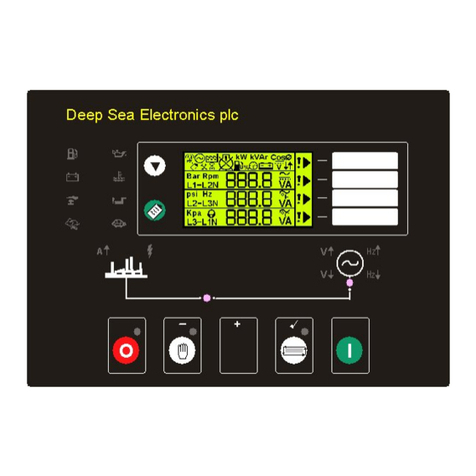
DSE
DSE 5210 operating manual

Equinox Systems
Equinox Systems SuperSerial PM16-RJ/422 Hardware manual addendum
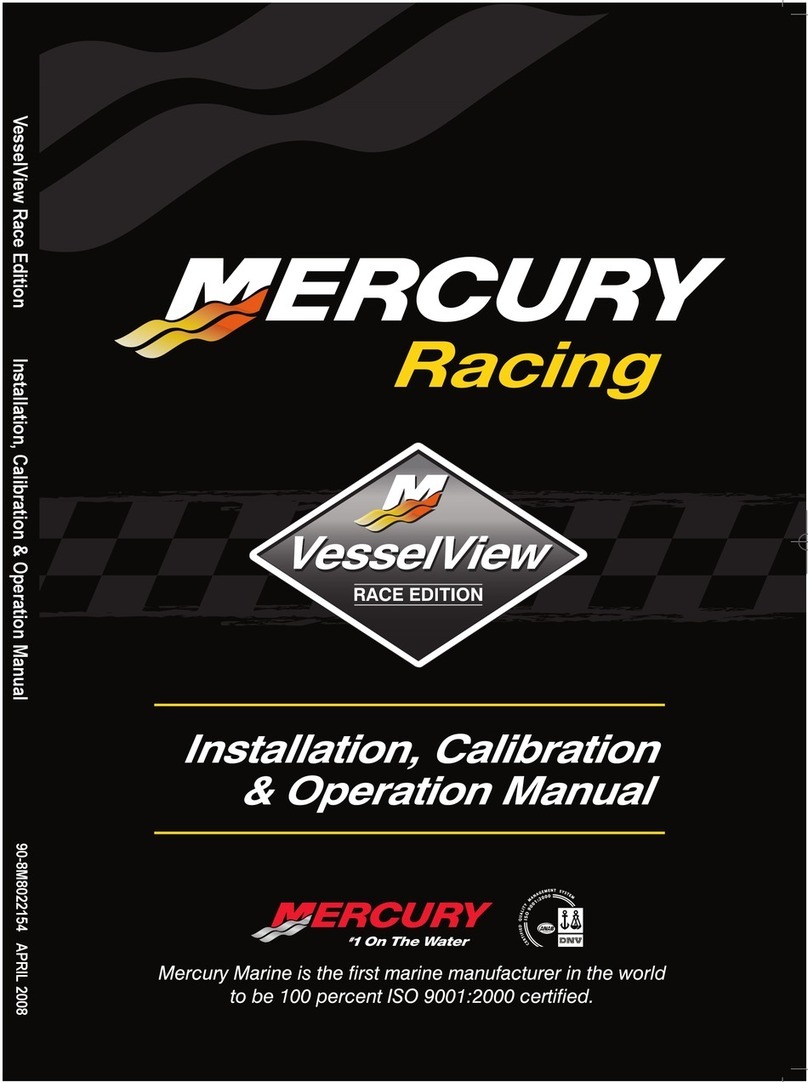
Mercury Racing
Mercury Racing VesselView Installation, Calibration & Operation Manual

ICP DAS USA
ICP DAS USA PETL-7060 quick start guide
